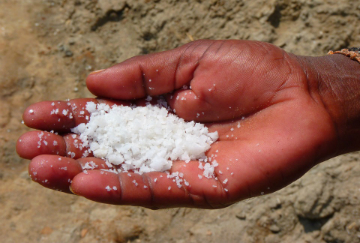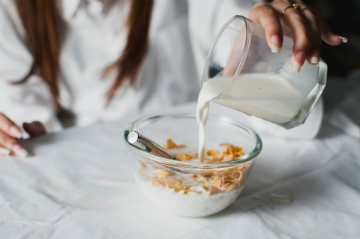New salt regulations
The World Health Organisation (WHO) recommends that adults eat less than 5g of salt (a teaspoon) a day, but in South Africa some experts estimate that salt intake by some South Africans could be as high as 40g of salt a day.
“The problem is that up to 60% of this salt is hidden in products and consumed by people probably unaware of the high salt content in their food,” says Dr Vash Mungal-Singh, CEO of the Heart and Stroke Foundation SA (HSFSA).
 Excess salt intake can increase hypertension, thereby contributing to heart disease, strokes and kidney disease. The risks of consuming too much salt is set to change as South Africans will eat a little less salt when legislation comes into effect to reduce the salt content of commonly consumed foods.
Excess salt intake can increase hypertension, thereby contributing to heart disease, strokes and kidney disease. The risks of consuming too much salt is set to change as South Africans will eat a little less salt when legislation comes into effect to reduce the salt content of commonly consumed foods.
What exactly is Sodium?
- Salt is made up of 2 parts: Sodium and Chloride.
- Sodium is the part of salt that can increase your blood pressure when you eat too much of it.
- 5g of salt is the same as 2 000mg of sodium.
More about the new salt regulation
From 30 June 2016 manufacturers need to stick with new salt levels. The amendment to the foodstuff regulations, however, was already put forward and published in the Government Gazette on 20 March 2013, and a 3 year implementation period was granted to allow time for manufacturers to experiment with reformulation and produce lower salt products that are still acceptable to consumers.
National Health Minister Aaron Motsoaledi’s ground-breaking bill imposes maximum salt level targets for a basket of commonly consumed foods, including:
- Bread
- Breakfast cereal
- Margarines and butter
- Savoury snacks
- Potato crisps
- Processed meats
- Sausages
- Soup and gravy powders
- Instant noodles
- Stocks
 Each of these food categories has an individual target to be achieved this year, and another stricter limit that needs to be met by 2019.
Each of these food categories has an individual target to be achieved this year, and another stricter limit that needs to be met by 2019.
Legislation isn’t a standalone solution
While legislation is an important step, it will not completely resolve our excess salt intake.
The HSFSA, stresses the fact that South Africans eat on average, double the recommended daily salt limit of 5 grams a day. Most of this salt doesn’t come from what consumers add themselves, but rather from what is added during manufacturing.
The Heart Foundation gives 5 tips to reduce salt in your diet:
- Cut down on processed foods:
Salt is found in almost every pre-prepared food, from processed meat to canned soup, to bottled dressings and packaged sauces, bread, and condiments such as tomato sauce and pickles.
- Cook at home:
By preparing and cooking your own meals means that you can control how much salt you are adding, as well as increasing how many vegetables you can add to dishes. Drain and rinse canned vegetables and beans, which could reduce your salt intake from these products by up to 50%.
- Flavour your food rather than adding salt:
Choose fresh or dried herbs, spices, garlic or lemon juice to ensure that your food doesn’t taste bland.
- Read the ingredients list:
If sodium or salt is listed in the first 3 ingredients, the food is likely to be a high-salt product. Salt may also be ‘hidden’ on the ingredients list as table salt, sodium chloride, monosodium glutamate (MSG), sodium nitrate, sodium bicarbonate and soy sauce – these are all salt too.
- Read the label:
Some products may have a low salt, low sodium or no salt added version, but also be aware that these products may not necessarily be ‘healthy’ if they’re also high in sugar or fat.
Find out if you’re eating too much salt
Eating too much salt can increase your risk of heart disease and strokes. Take this quick test to find out how much salt you eat. The salt calculator will estimate your salt intake and suggest practical tips that can help you eat less salt.
 Salt and your health:
Salt and your health:
Read these brochures to find out more about the implications that high salt intake has on your health:
Read more:
- Salt Watch
- HSFSA Salt reference manual
- World Hypertension Day 2016
- World Action on Salt and Health (WASH)
- WHO Guideline: Sodium intake for adults and children


